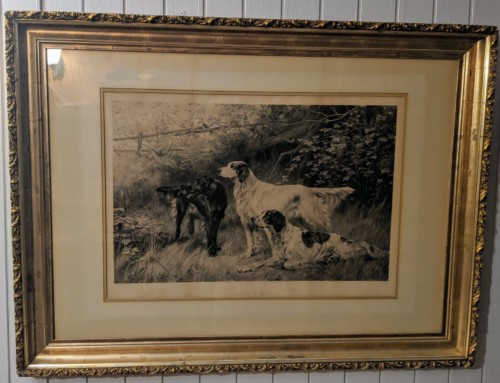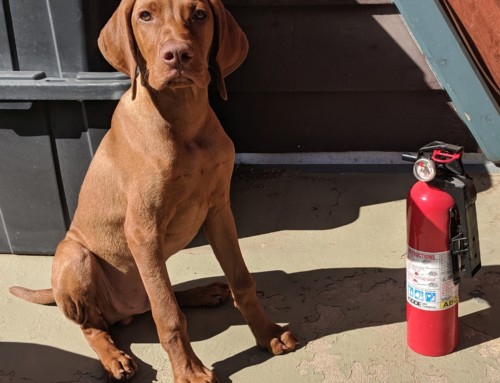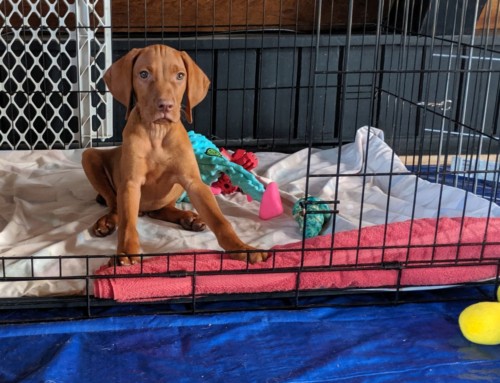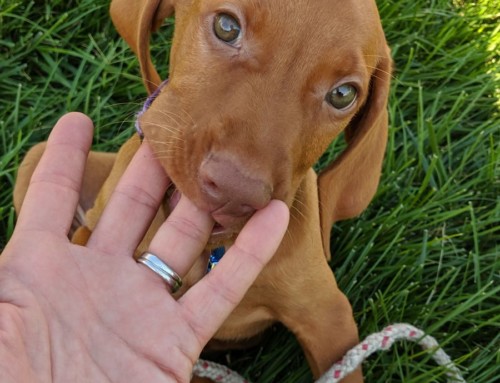DOG TRAINING OFFERED IN-PERSON AND ONLINEOur dog training services are delivered in almost any format that meets your needs. We have GROUP CLASSES at our indoor and outdoor facilities on our farm, ONLINE LIVE STREAMING classes, and SELF-PACED VIDEO-BASED training through our Online Dog Training Course. Our PRIVATE TRAININGS can be done in-home, outside, in public dog-friendly locations, at our facility on our farm, online via phone or video conferencing and through email. |
If you take your dog on off-lead walks in nature, which is what we do every day, it is good to know some rules about wildlife interaction with your dog. In a perfect world, we do not want our dogs interacting with any wildlife. But the world and our dogs are not perfect, so what can we do? Where can we be flexible?
Depending upon where you live, there are different wildlife, but this is a common list you are likely to be exposed to with your dog in the continental U.S.
Bats, Bears, Birds, Bobcats, Coyotes, Deer/Elk, Fleas, Foxes, Mice, Mountain Lions, Opossums, Porcupines, Prairie Dogs, Rabbits, Raccoons, Rats, Skunks, Snakes, Squirrels, Ticks, Voles
It is common knowledge to not interact with wildlife like bears, mountain lions, skunks and snakes.
But other wildlife on this list can be just as dangerous, mostly because of the diseases they can carry, either on their bodies, inside their bodies or in their feces.
Ingesting deer feces is the biggest problem we have with our dogs, as deer regularly roam through our property. Fortunately, that form of wildlife interaction seems to carry the least amount of risk. So, while we discourage it and try to prevent them from doing it, it’s still going to happen on occasion with some dogs.
Rabbits and rabbit feces feces are also abundant where we live, but they also carry the least amount of risk.
Another common pastime for our Zuzu is to sit outside at night during the summer months near the outdoor light in our backyard and catch moths. That also seems to be a fairly benign form of wildlife interaction that does not cause any problems.
But the above are about the limit that anyone should allow in terms of wildlife interaction.
Here is what we found is the best way to limit our dog’s exposure to wildlife and the ills that can come from it:
- Maintain their health through proper diet and exercise, so they are less likely to want to eat other things because they are missing something nutritionally.
- Keep up with their vaccinations (or titers) and vet checkups.
- Inspect them daily for bite marks, scuffles, skin irritations, or the presence of ticks and fleas and remove or apply first aid as needed.
- If they are off lead on walks, have an excellent recall to quickly get them to come back to you. We always carry treats with us, because not only do we use our walks as training sessions, but we want to reward them just for staying close or coming back to us on their own.
- Keep them busy on the walks – play fetch with them, get them to climb on objects, go around objects or other tricks and exercises. This keeps their brain working and focused on you, not on other things on the walk that might distract them.
- Keep them close and within sight at all times, especially small dogs who are more likely to get snatched by a cunning coyote.
- Do not let them drink from water sources that are accessible by wildlife, especially birds. This applies even if you keep a water dish outside for your dog and birds also drink from it.
- Do not let them put their noses into a small hole in the ground to sniff. Fleas, especially, can lie in wait at the base of a hole to latch onto their next host when one comes by and takes a sniff.
- If they do capture an animal, even if that animal is a low threat to biting your dog, such as a mouse, vole, bunny or squirrel, remove the animal from them as quickly as possible. Teaching a reliable Drop It can be valuable here.
- Never let your dog ingest an animal, or even a part of it should they find in on their walk. Dispose of the carcass but never touch it with your bare hands. Use a shovel and if you have to use your hands, wear disposable gloves. A wild animal can carry fleas which can easily jump to you or other bacteria that can transfer to your skin
- Be very careful when using bait to control rodents like mice and rats. If your dog ingests a dead mouse that ate bait, they could get very sick ingesting the bait that the mouse ate. We use humane traps. to keep our mouse population under control around our house.
- Discourage certain wildlife like rodents from populating through the use of humane traps and removing any piles of wood or other items where they will be enticed to live.
Our goal is to positively impact the lives of as many dogs and their families as we can, in part through our extensive library of video, infographics and text articles. 
|










Leave A Comment